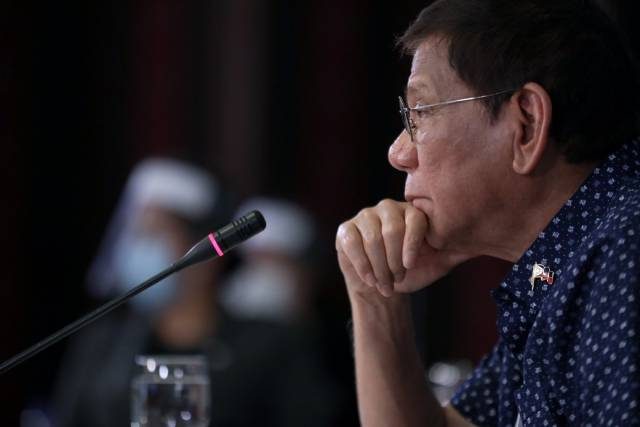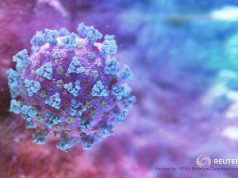President Rodrigo Duterte placed the areas considered moderate and low-risk of novel coronavirus infections under “general community quarantine” (GCQ) until May 15, aside from extending the standing quarantine measure in Luzon.
Presidential Spokesperson Harry Roque made this announcement after the airing of Duterte’s national address on Friday morning. The national address was taped on Thursday evening.
The GCQ decision was based on the recommendation of the Inter-Agency Task Force for Emerging Infectious Diseases (IATF-EID).
After the announcement of the new directive, the keywords “extended ECQ” and “general community quarantine” subsequently trended on Twitter Philippines along with the following hashtags:
- #ECQSeason3 – A a witty take on the extended period of the enhanced community quarantine or ECQ
- #lockdownextension
Twitter users used these keywords and hashtags to express their opinion on the new directive of the government and also used them for their humorous take on the quarantine extension.
The hashtag #ECQSeason3 earned more than 17,900 tweets while #lockdownextension as over 125,000 tweets, as of writing.
Meanwhile, more than 4,200 tweets used the keyword “general community quarantine” while “extended ECQ” has over 14,200 tweets.
Online entertainment Facebook page FTTM shared a post on the ECQ extension that appeared like an announcement of a new season of a television series. The ECQ was imposed over Luzon last March 17.
The photo said: “Now Showing: ECQ Season 3.” It was captioned with: “‘Di ka pa makakalabas, bes!
Showing until May 15, 2020 in select cinemas.”
‘Di ka pa makakalabas, bes!Showing until May 15, 2020 in select cinemas.
Posted by FTTM on Thursday, April 23, 2020
A Twitter user also shared different witty titles to describe the scaled up COVID-19 preventive measures, which was once called “community quarantine.”
Community Quarantine
Enhanced Community Quarantine
General Community Quarantine
Extreme Community Quarantine
Super Community Quarantine
Super Duper Community Quarantine
Real na Real Community Quarantine
Todo na to Community Quarantine
Promise, todo na to, Community Quarantine— ʲ∆ⁱ (@hoelyjonaxxboys) April 24, 2020
An official from Pasig City, meanwhile, noted that local government units normally do not receive advance copies of such amendments, thus making their work on the ground more difficult.
“We’ll have to wait for them to come at 8 or whenever they come, in the middle of juggling all the increased service provision under ECQ,” Anton Siy, chief transport planner of Pasig City said on Twitter.
The national government previously implemented a “community quarantine” over the National Capital Region last March 12 to contain the rising cases of COVID-19.
It was then expanded to cover the entire Luzon and was then called “enhanced community quarantine.”
This measure was initially scheduled to end on the midnight of April 13. However, Duterte extended it until April 30 to help government agencies in their response efforts to Filipinos severely affected by long-running lockdown before it was extended anew up to May 15.
GCQ and ECQ
The GCQ is basically less stringent than the ECQ, according to the new guidelines of the IATF.
Under the new guidelines the IATF classified provinces and regions into high-risk, moderate-risk and low-risk areas of spreading COVID-19.
“High-risk areas will be under ECQ until May 15, subject to further evaluation. Moderate-risk areas meanwhile will be under general community quarantine starting May 1, also subject to further evaluation. Low-risk areas will fall under general community quarantine starting May 1, and if there is no deterioration, GCQ will be relaxed leading to normalization starting May 16,” the Office of the President’s release read.
The following changes on places under GCQ are:
- Workers would be allowed to go out and work in phases.
- In line with this, priority and essential construction projects would resume. These would still be subjected to minimum health standards, physical distancing, and barracks for workers.
- Curfew at night would still be enforced for non-workers only.
- Public transportation would also be allowed but at reduced capacity.
- Airports and seaports would also be open for the movement of goods.
- Aside from workers, the general population may now go out to acquire basic necessities and services, which were stated in the ECQ guidelines.
- Malls would also open but with restrictions. There will also be mandatory temperature check, mandatory wearing of masks, mandatory alcohol use.
- In line with this, only a limited number of people will be allowed inside. These include those aged between 21 and 59 years old with ID and “not looking sickly.”
- Young people, senior citizens and other high health risk people would stay at home.
- In terms of education, higher education institutions would continue their classes to finish the academic year.
Is your province under ECQ or GCQ?
High-risk areas
High-risk places, under ECQ, include the entire Metro Manila and the following provinces:
Luzon
Region III
- Bataan
- Bulacan
- Nueva Ecija
- Pampanga
- Tarlac – May change by April 30
- Zambales – May change by April 30
Region IV-A
- Batangas
- Cavite
- Laguna
- Rizal
- Quezon
Region IV-B
- Oriental Mindoro
- Occidental Mindoro
Region V
- Albay
- Catanduanes
Cordillera Administrative Region
- Benguet – May change by April 30
Region I
- Pangasinan – May change by April 30
Mindanao
- Davao del Norte
- Davao City
On the other hand, the following provinces are subject to ECQ and evaluation of recheck:
Visayas
Panay island (Subject to ECQ and evaluation)
- Antique
- Iloilo
- Aklan
- Capiz
Cebu (Subject to ECQ and evaluation)
- Cebu province
- Cebu City
Mindanao
Davao de Oro (formerly Compostela Valley) – Subject to ECQ and recheck
Meanwhile, under the draft matrix recommendation of the IATF-IED posted by GMA News reporter Joseph Morong on his social media accounts, these are the moderate-risk and low-risk areas under the GCQ:
Low-risk areas
Luzon
Region IV-B
- Palawan
- Romblon
Region V
- Camarines Norte
- Sorsogon
- Masbate
Region VI
- Guimaras
Region VII
- Bohol
Region VIII
- Biliran
- Eastern Samar
- Leyte
- Northern Samar
- Southern Leyte
Region IX
- Zamboanga del Norte
- Zamboanga Sibugay
Region X
- Bukidnon
- Camiguin
Region XI
- Davao Occidental
Moderate risk-areas
Luzon
Region IV-B
- Marinduque
Region V
- Camarines Sur
Region VI
- Negros Occidental
- Negros Oriental Siquijor
Region VIII
- Samar (Western Samar)
Mindanao
Region IX
- Zamboanga del Sur
Region X
- Lanao del Norte
- Misamis Occidental
- Misamis Oriental
Region XI
- Davao del Sur
- Davao Oriental
- Davao de Oro (To recheck)
Both ECQ and GCQ are subject to change based on the regular evaluation of the IATF-IED.










